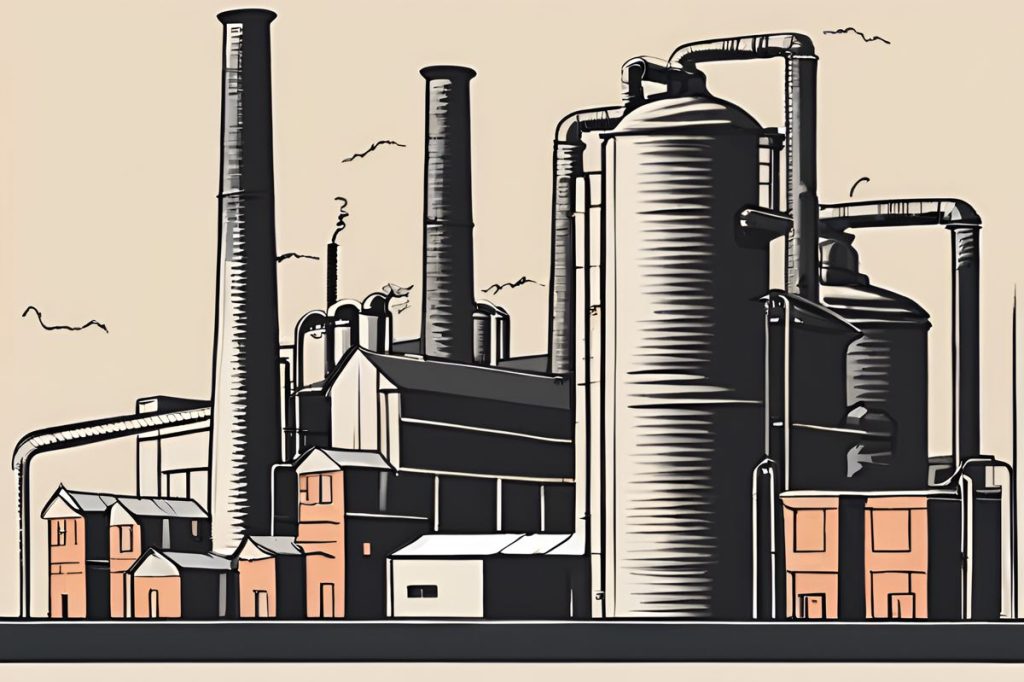Cyprus’s industrial production showed a robust growth in February, with the Industrial Production Index rising by 6.7 percent year-on-year to 103.4 points, driven by a 6.9 percent increase in manufacturing. Sectors like non-metallic mineral products and machinery and equipment saw significant growth, reflecting a resilient and diversifying economy.
What is the current state of Cyprus’s industrial production?
Cyprus’s industrial production gained momentum in February, with the Industrial Production Index rising by 6.7 percent year-on-year to 103.4 points. Manufacturing grew by 6.9 percent, with significant increases in sectors like non-metallic mineral products (15.7 percent) and machinery and equipment (13.4 percent). This growth reflects a resilient and diversifying economy.
A Look at the Numbers
The Industrial Production Index in Cyprus has shown a commendable increase of 6.7 percent year-on-year this past February, reaching a noteworthy 103.4 points. This rise in the index is particularly significant against the backdrop of 2021, which serves as the base year with a benchmark value of 100 units. This uptick is a positive sign for the Cypriot economy, reflecting a period of growth and recovery in various industrial sectors.
Sector-wise, manufacturing has seen a robust growth of 6.9 percent when compared to the same month in the previous year. Other areas also saw significant gains, such as water supply and material recovery, skyrocketing by 33.8 percent, alongside mining and quarrying, which posted a healthy 29.3 percent increase. These figures underscore a diversifying industrial landscape, poised for sustained expansion.
Sectoral Insights
The electricity supply sector, however, faced a downturn, with a reported decrease of 5.2 percent in production. Despite this setback, the overall trajectory for Cyprus’s industrial production remains promising, with particular sectors showing impressive resilience and dynamism.
In the realm of manufacturing, certain sub-sectors have outperformed others. Notable increases were recorded in the production of non-metallic mineral products, which jumped by 15.7 percent. The combined sector of furniture manufacturing, along with the repair and installation of machinery and equipment, also enjoyed a significant boost, with a 14.9 percent increase. Other manufacturing sectors followed suit, with machinery and equipment nudging upwards by 13.4 percent and the production of base metals and related products rising by 10.1 percent.
Manufacturing on the Rise
However, it wasn’t all growth across the board. The manufacturing of paper products, along with the printing sector, experienced a slight contraction, dipping by 2.3 percent. Despite this, the cumulative index for January and February reflected an overall increase of 5.8 percent compared to the same period in the previous year, painting a picture of steady industrial growth for the country.
The manufacturing sector’s varied performance highlights the multifaceted nature of industrial production. Some industries are expanding rapidly, possibly due to increased demand or innovation, while others face challenges that may be attributed to changing market conditions or technological disruption.
Tracking the Trends
Beyond the raw figures, these trends offer insights into the shifting dynamics of Cyprus’s industrial economy. The data suggests a move towards sectors that are inherently more sustainable and technologically advanced. This aligning with global trends could position Cyprus favorably on the international stage as the country continues to develop its industrial capacities.
As we continue to observe the industrial trends in Cyprus, it is crucial to consider the broader implications these changes have on employment, economic stability, and long-term growth. The diversification in production and the resilience of key sectors indicate a level of economic agility that could well serve the nation in times of global uncertainty.
In summary, the industrial landscape in Cyprus is one of vigor and potential. The figures reported for February, while mixed, generally point towards a period of industrious advancement. As the year progresses, it will be interesting to see how these trends evolve and what impact they will have on the broader economic prospects of Cyprus.
What is the current state of Cyprus’s industrial production?
Cyprus’s industrial production gained momentum in February, with the Industrial Production Index rising by 6.7 percent year-on-year to 103.4 points. Manufacturing grew by 6.9 percent, with significant increases in sectors like non-metallic mineral products (15.7 percent) and machinery and equipment (13.4 percent). This growth reflects a resilient and diversifying economy.
How has the Industrial Production Index in Cyprus performed in February?
The Industrial Production Index in Cyprus increased by 6.7 percent year-on-year in February, reaching 103.4 points. This growth is a positive indicator for the Cypriot economy, showcasing a period of expansion and recovery in various industrial sectors like manufacturing.
What are some notable sectoral insights from Cyprus’s industrial production data?
While manufacturing as a whole grew by 6.9 percent, specific sectors stood out with remarkable growth rates. For example, water supply and material recovery saw a significant 33.8 percent increase, while machinery and equipment production rose by 13.4 percent. However, the electricity supply sector experienced a decline of 5.2 percent in production.
What trends are emerging in the manufacturing sector of Cyprus?
The manufacturing sector in Cyprus is showing signs of steady growth and diversification. Industries like non-metallic mineral products, furniture manufacturing, machinery and equipment production, and base metals are experiencing positive growth. However, certain sectors like paper products and printing have seen slight contractions. Overall, the industrial landscape in Cyprus is evolving towards sustainability and technological advancement.

